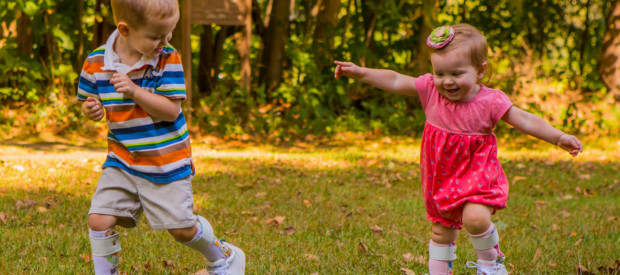Botox treatment observed less effective for children with CP
More than one injection of botulinum toxin A in children with cerebral palsy (CP) was seen as less effective over the long term and had fewer gait benefits compared to patients injected once or not at all, according to a new study published in the journal Toxins.
By Iqra Mumal, Cerebral Palsy News Today November 15, 2017
Patients with CP are characterized by spasticity, a condition in which certain muscles are continuously contracted. In patients with CP, spasticity increases up to the age of 4 and then decreases until the age of 12.
Botulinum toxin A (BoNT) is often used for the control of spasticity, as many studies have shown that it is both safe and effective. BoNT acts by reducing the release of acetylcholine from neurons to the muscles, which decreases muscle hyperactivity.
How patients respond to treatment depends on the dose of BoNT, the way it’s administered, and rehabilitation therapies that accompany it.
BoNT’s effect on neuromuscular junctions lasts for 12-16 weeks, but due to its temporary effect, the injection is often re-administered. However, since CP is a life-long disease, the long-term effects and effectiveness of this treatment need to be further evaluated.
A multicenter, double-blinded, randomized, Phase 3 clinical trial was conducted to compare the effectiveness of Botulax (letibotulinumtoxin A) and Botox (onabotulinumtoxin A) in the treatment of CP children. The team also analyzed how the number of injections influenced gait scores and gross motor outcomes.
The gait analysis score was based on a physician’s rating scale for gait (PRS), in which a PRS score difference of two or more was considered successful. Gross Motor Function Measure-88 (GMFM-88) total, and subgroup D and E scores, were used to evaluate gross motor function.
Results showed that the first injection significantly increased the D subscale of Gross Motor Function Measure-88 at three months compared to patients who had repeated injections. Furthermore, after six months, patients who had either been administered one injection or none prior to the study had better outcomes in gait scores than those who had more than one injection.
Based on the results, the team suggested that repeated botulinum toxin injections are not a good therapeutic approach for spasticity in children with cerebral palsy.
Source Cerebral Palsy News Today
| References |
Efficacy of Repeated Botulinum Toxin Type A Injections for Spastic Equinus in Children with Cerebral Palsy—A Secondary Analysis of the Randomized Clinical Trial, Bo Young Hong, Hyun Jung Chang, Sang-Jee Lee, Soyoung Lee, Joo Hyun Park, and Jeong-Yi Kwon, Joseph Jankovic, Academic Editor. Toxins (Basel). 2017 Aug; 9(8): 253. Published online 2017 Aug 21. doi: 10.3390/toxins9080253. PDF
| Further reading |
Treatment with Botulinum toxin A in a total population of children with cerebral palsy – a retrospective cohort registry study, Maria Franzén, Gunnar Hägglund and Ann Alriksson-Schmidt. BMC Musculoskeletal Disorders, 2017. 18:520 https://doi.org/10.1186/s12891-017-1880-y. PDF
Treatment with Botulinum toxin a in children with cerebral palsy in Sweden, M Franzén, A Alriksson-Schmidt, G Hägglund. Abstracts of 71st Annual Meeting of the American Academy for Cerebral Palsy and Developmental Medicine (AACPDM), September 13–16, 2017, Montréal, Québec, Canada. Dev Med Child Neurol, 59: 31–32. doi:10.1111/dmcn.44_13511.
Safety and Efficacy of Repeat Open-Label AbobotulinumtoxinA Treatment in Pediatric Cerebral Palsy, Mauricio R Delgado MD, Marcin Bonikowski MD, Jorge Carranza MD, Edward Dabrowski MD, Dennis Matthews MD, Barry Russman MD, Ann Tilton MD, Juan Carlos Velez MD, Anne-Sophie Grandoulier MSc, and Philippe Picaut PharmD. J Child Neurol. 2017 Nov; 32(13): 1058–1064. Published online 2017 Sep 15. doi: 10.1177/0883073817729918
Safety of Botulinum Toxin A in Children and Adolescents with Cerebral Palsy in a Pragmatic Setting, Antigone S Papavasiliou, Irene Nikaina, Katerina Foska, Panagiotis Bouros, George Mitsou, and Constantine Filiopoulos. Toxins (Basel). 2013 Mar; 5(3): 524–536. Published online 2013 Mar 12. doi: 10.3390/toxins5030524
A dose-response relationship research on botulinum toxin type A local intramuscular injections of lower extremity spasticity in children with cerebral palsy, Wang Y, Gao B. Childs Nerv Syst. 2008 May;24(5):545-7. doi: 10.1007/s00381-007-0571-7. Epub 2008 Feb 23.
Also see
Cerebral Palsy and Botox Treatment Cerebral Palsy Guidance
Second Botox lawsuit filed in Vermont Burlington Free Press
Botox Treatment for Cerebral Palsy Depends on Age, Sex, Gross Motor Function, Study Shows Cerebral Palsy News

